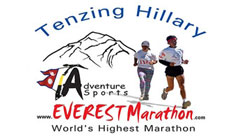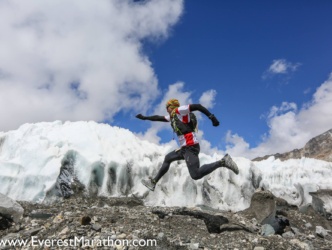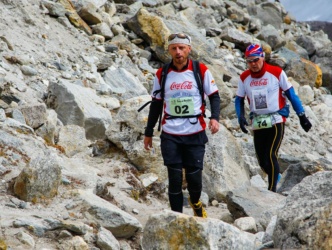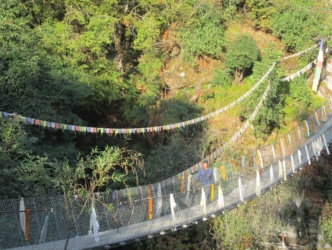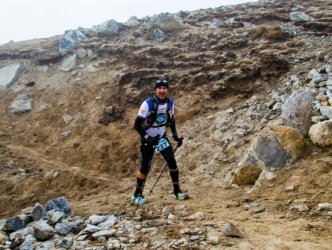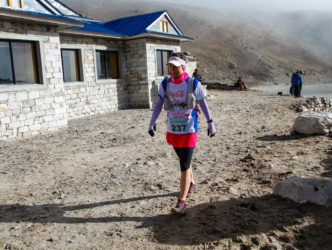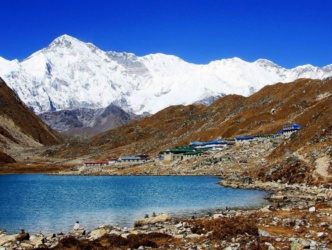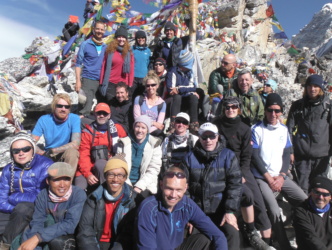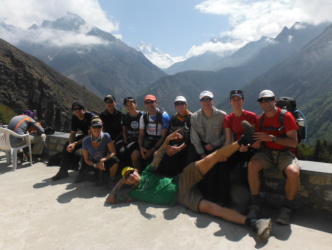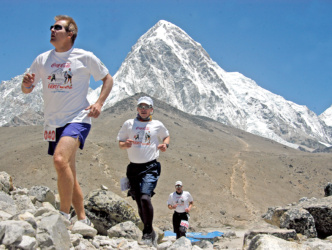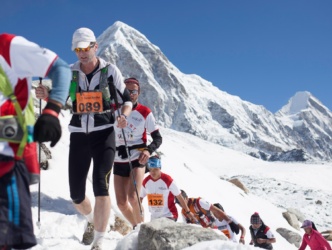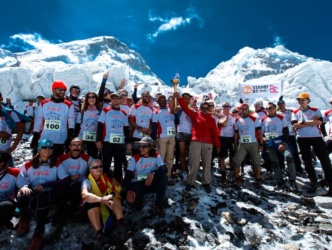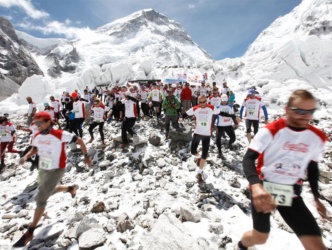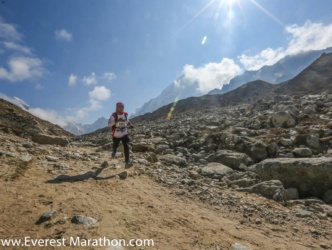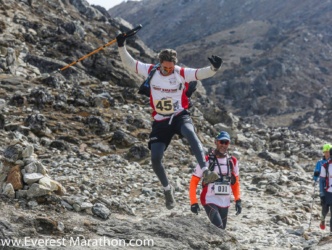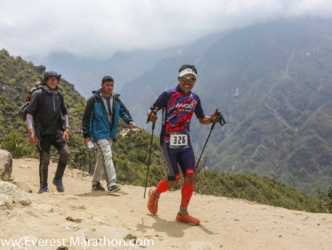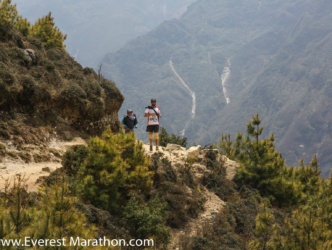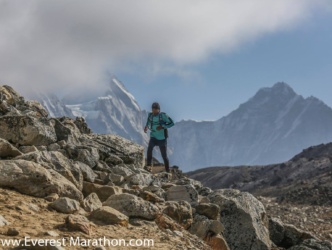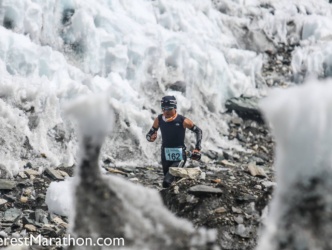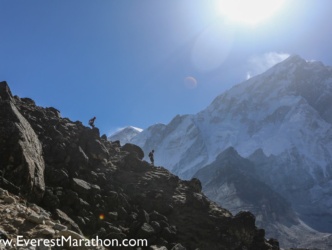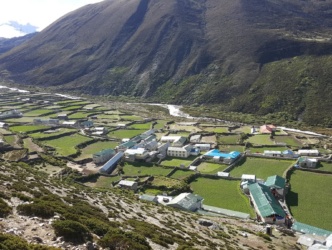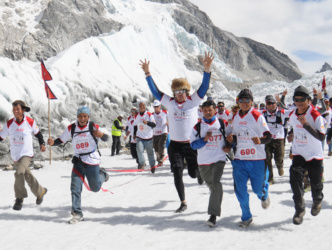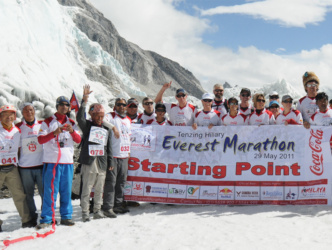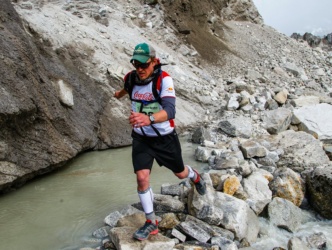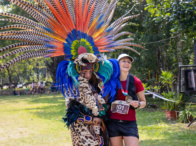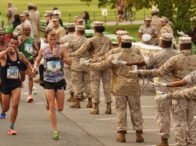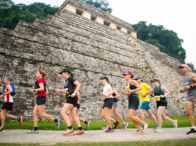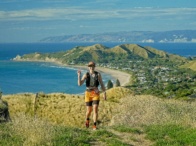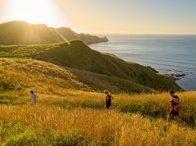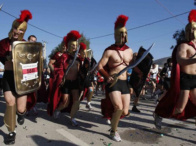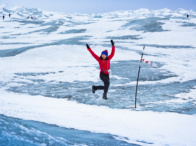Welcome to Everest, Nepal
Travelling Fit is proud to be the official Australian sales representatives for the Tenzing Hillary Everest Half Marathon and has been sending people to this beautiful part of the world to run for over 17 years.
We are pleased to be able to offer a lodge option during the trek up to Everest Base Camp prior to the Half Marathon event.
It is also possible to include one of three extraordinary extension tours leading up to race day which include:
- Gokyo Valley Trek – Trek to Gokyo Ri at 5,357m, a viewing point with astounding views of Cho Oyu’s full face and sections of Mt Everest.
- Island Peak – designed for extreme adventure lovers which gives the opportunity to climb Island Peak.
- Heli In-Out – for those limited with time, this package allows competitors to be flown by helicopter from Kathmandu to Lukla and from Namche Bazaar back to Kathmandu.

- Packages Include
- Guaranteed race entry to the Tenzing-Hillary Everest Marathon (Runners only)
- Return airport Transfers in Kathmandu
- 3-4 Nights hotel accommodation in Kathmandu (varies with package)
- 9-12 Nights lodging during the trek (varies with package)
- 1-2 Nights camping at Everest Base Camp prior to race day (varies with package)
- Half day sightseeing tour in Kathmandu
- Return flights between Kathmandu or Ramechap and Lukla
- All meals are included whilst on trek
- Celebration Dinner Party and awards in Kathmandu on Monday 02 June 2025
- Certified Guides
- Trekking permits and National Park entrance fees
- Porters to carry luggage during the trek (max. 15kg per person)
- Personalised Travelling Fit Running Top
exclusive to Travelling Fit clients - Invite to Travelling Fit’s Tenzing Hillary Everest Marathon Closed Facebook Group
exclusive to Travelling Fit clients
PACKAGE FLYERS
PACKAGE PRICES
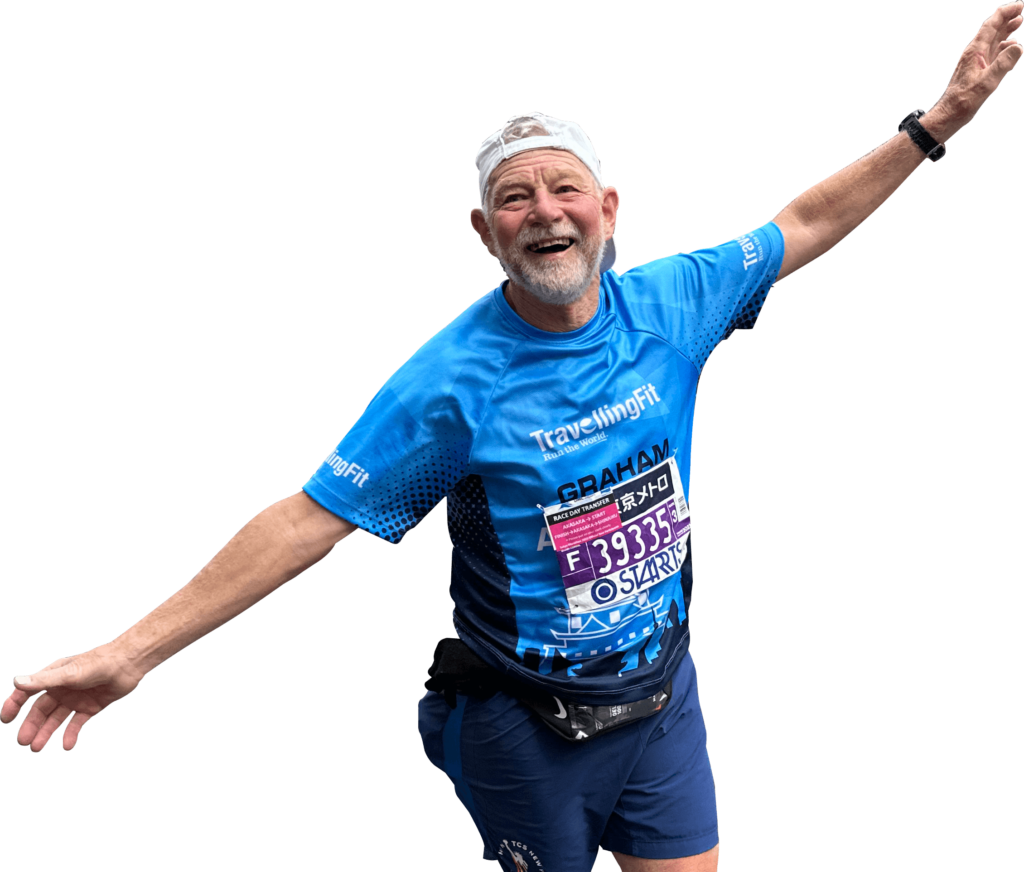
The Tenzing Hillary Everest Marathon is an International High Altitude running event being held at Mt. Everest Base Camp every year on May 29. The race commemorates the historical ascent of Mount Everest by Late Tenzing Norgay Sherpa and Sir Edmund Hillary on May 29, 1953.
Participants will climb Kala Patthar, a view spot at 5,643 m prior to the race. Glorious views of Mt. Everest, Nuptse, Lhotse and other mountains are visible in a panoramic structure from Kala Patthar. Competitors will spend two Nights at Everest Base Camp, prior to race start, where only expedition climbers are allowed to camp.
The Tenzing-Hillary Everest Marathon is the highest marathon in the world, starting at 5,356m above sea level from Expedition Base Camp right at the edge of Khumbu Icefall with a backdrop of Everest, Lhotse and Lola Pass.. The course is mostly downhill and is a trekking trail. The trails of this course descend through Gorakshep, Lobuche, Thukla and heads down towards Dingboche where runners will make a loop at Biber. From here, the tracks will descend through Pangboche, Tengboche, Laubisasa, Kyanjuma and finish in Namche at 3,550m.
Check out the Everest Marathon Route and Map and Everest Marathon elevation profile to learn more about what to expect!
Testimonials
-

- Participants of the Tenzing Hillary Everest Marathon begin the race from Gorapshep ( 5200 meter) near to Everest Base Camp on Thursday, May 29, 2014. The Tenzing Hillary Everest Marathon Everest Marathon is the most challenging and world’s highest marathon in the world, it’s started from near the famous Khumbu Ice Fall at Everest Base Camp (5,364 meters above sea level) and the finish was at Namche Bazar (3,440 meters above sea level). Due to the heavy snowfall the starting point was changed in concerned with the safety of the runners. Nepali athlete Sudip Kulung 26 clinched the title of the 12th Tenzing Hillary Everest Marathon completing 42.19 km race in 3 hour 52 minute 9 second on Thursday as Nepali athlete continued their dominance in the highest altitude marathon claiming all top ten positions.
Race Information
Entry Fees
Entries are only applicable in conjunction with a marathon package.
Qualifying Times
There are no qualifying times required for this event BUT each participant will require a Health Certificate from their doctor stating that you are physically able to participate in a marathon at high altitude and on this type of terrain.
All non-runners must have previous hiking experience on varied mountainous terrain.
Start Time
The Tenzing-Hillary Everest Marathon will commence at 7:00am from Base Camp. The exact time will be confirmed at Base Camp.
Cut-Off Times
There is cut off time of 4:00pm for the Marathon runners at Thyangboche.
Those who do not cross Thyangboche after 4:00pm must stop overnight at the local lodge in this village and continue the Marathon event the next morning at 6am.
For those who do not finish on the first day, there will be a penalty of 3 hours added to their total timing.
Race Timing
There will be Race officials at all checkpoints checking your progress and marking your time.
Race Packets
Race Packets include the official Tenzing Hillary Everest race event T-shirt and your Race Number which will be distributed at the briefing in Kathmandu.
Pace Setters
There are no official pace setters for this event.
Aid Stations
Water and electrolytes will be supplied along the course and light food provided at Dingboche.
Personal Refreshments and Clothing
It is possible for runners to have their personal drinks/food out on the course, this is also recommended.
Extra clothing is to be given to the Sherpas/Porters which will ensure their safe arrival at the finishing point.
Transport
All transport required on this tour is included in the price of the package.
Expo
Not Applicable.
Finishers T-Shirts, Medals and Certificates
All finishers will receive a Certificate, Medal and a race T-shirts.
Weather Conditions
The Average Temperatures in May are as follows:
- Kathmandu 22 Degrees Celsius.
- Namche Bazaar 9 Degrees Celsius
- Mt Everest Base Camp 0 Degrees Celsius.
Tenzing Hillary Everest Marathon FAQs
How long is the Everest marathon?
The Tenzing Hillary Everest Marathon covers the standard marathon distance of 42.195 kilometres (26.2 miles).
This challenging race is renowned for being the world’s highest marathon, starting from Everest Base Camp, situated at an elevation of 5,364 metres (17,598 feet), and finishing in Namche Bazaar.
The event also offers a Half Marathon (21.0975km) and Extreme Ultra Marathon (60 km).
How difficult is the Everest Marathon?
The Tenzing Hillary Everest Marathon is considered one of the most challenging marathons in the world, due to the extreme conditions and terrain it encompasses.
Factors that contribute to its difficulty include:
High Altitude
Rugged Terrain
Climate and Weather
Preparation and Acclimatisation
How much is the Everest Marathon?
The cost to participate in the Tenzing Hillary Everest Marathon can vary depending on the package you choose, which typically includes not just the race entry but also a comprehensive trekking and acclimatisation program leading up to the event.
These packages are designed to ensure participants are well-prepared for the high-altitude conditions and can include accommodations, meals, guided treks to Everest Base Camp, and various other support services necessary for the duration of the trip, which is often around 3 weeks.
When is the Everest Marathon?
The Tenzing Hillary Everest Marathon is held annually on May 29th. This date commemorates the first successful summit of Mount Everest by Sir Edmund Hillary and Tenzing Norgay in 1953.
It’s important to note that participants usually need to arrive in Nepal weeks in advance of the race date for acclimatisation and preparation.
How do I train for the Everest Marathon?
Preparing for the Tenzing Hillary Everest Marathon, the world’s highest marathon involves comprehensive planning and prep due to its unique high-altitude and rugged terrain challenges:
Acclimatisation: Spend several weeks before the marathon acclimating to high altitudes. This can include training in high-altitude areas or using altitude simulation techniques.
Physical Training: Focus on endurance, strength, and trail running. Incorporate long runs, strength training, and trail runs on varied and rugged terrain into your training routine.
Mental Preparation: Familiarise yourself with the marathon details and route. Practice visualisation and positive thinking to build mental resilience.
Nutrition and Hydration: Adapt your diet for high-altitude conditions, emphasising carbohydrates and hydration. Experiment with your nutrition and hydration strategy during training.
Gear: Invest in appropriate clothing for cold and windy conditions and trail running shoes with good grip. Train with the gear you plan to use on race day.
Health Check and Insurance: Get a health check to discuss high-altitude risks and ensure you have travel insurance that covers high-altitude trekking and emergency evacuation.
Pre-Marathon Trek: Participate in the pre-marathon trek to Everest Base Camp to help with acclimatisation and familiarise yourself with the local conditions.


